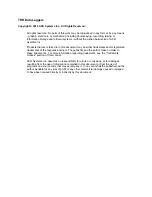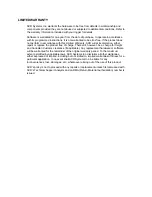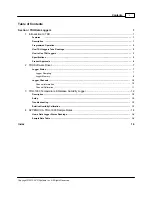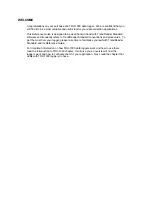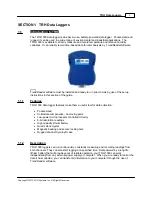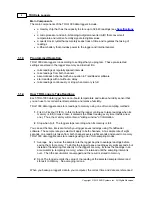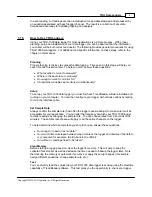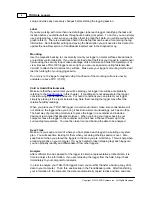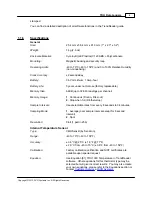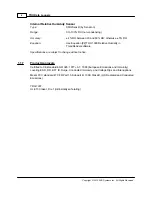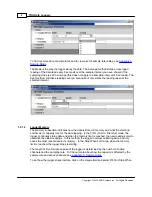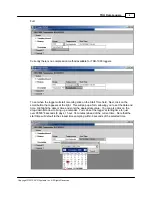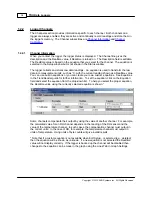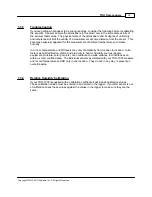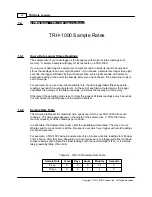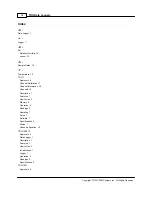
TRH Data Loggers
2
Copyright © 2010 ACR Systems Inc. All Rights Reserved.
Main Components
The main components of the TRH-1000 data loggers include:
·
a memory chip that has the capacity to store up to 32,640 readings (see
)
·
a microprocessor and an 8-bit analog-to-digital converter (A/D) that converts all
temperature and relative humdity signals to digital values
·
a quartz clock crystal that accurately keeps track of time and regulates the taking of
readings
·
a lithium battery that provides power to the logger and internal sensors
1.1.3
Programmed Operation
TRH-1000 data loggers run according to settings that you program. These pre-selected
settings are stored in the logger's memory and instruct it to:
·
take readings at regularly spaced intervals
·
take readings from both channels
·
associate each channel with an equation in TrendReader software
·
start readings with or without a delay
·
take readings continuously, or stop when memory is full
1.1.4
How TRH Loggers Take Readings
Each TRH-1000 data logger has an on-board temperature and relative humidity sensor that
you can use to record ambient temperature and relative humidity.
TRH-1000 data loggers can store readings to memory using one of two sampling methods:
1
. First-in, First-out (FIFO). In this method the logger continues to take readings when its
memory is full (to make room, it discards the oldest reading every time it adds a new
one). Thus, the memory will contain a "sliding window" of information.
2
. Stop when Full. The logger stops recording when its memory is full.
You can set the time interval at which your logger saves readings using TrendReader
software. The sample rate you select will apply to both channels. At a sample rate of eight
seconds, one reading is taken from both channels every eight seconds and saved to memory.
TRH-1000 data loggers can store readings using one of two sampling modes:
1
. Average. As you slow the sample rate the logger begins to average readings before
saving them to memory. To do this the logger takes a reading every eight seconds, but
instead of transferring this directly to the logger's memory, it stores the readings in an
accumulator (a temporary memory) where it is retained until the sampling interval is
over. Then the accumulator is averaged and the result is stored to memory.
2
. Spot. The logger records the value of the reading at the selected sample interval and
stores it to memory. No averaging is done.
When you backup a logger's data to your computer, the correct time and date are referenced
Содержание TRH-1000
Страница 3: ...TrendReader is a Registered Trademark of ACR Systems Inc TRADEMARK NOTICES ...
Страница 23: ......
Страница 24: ......


